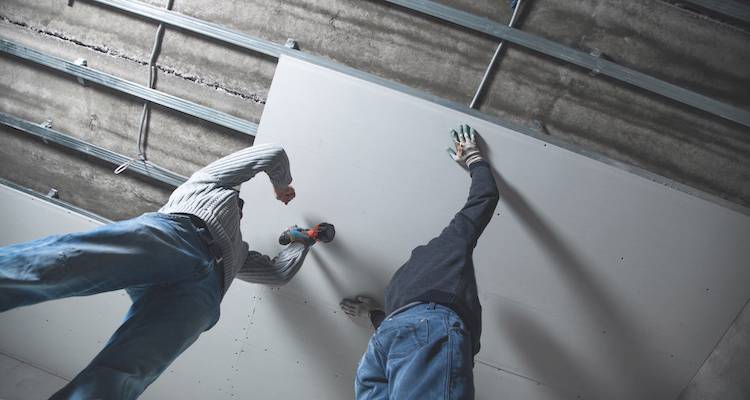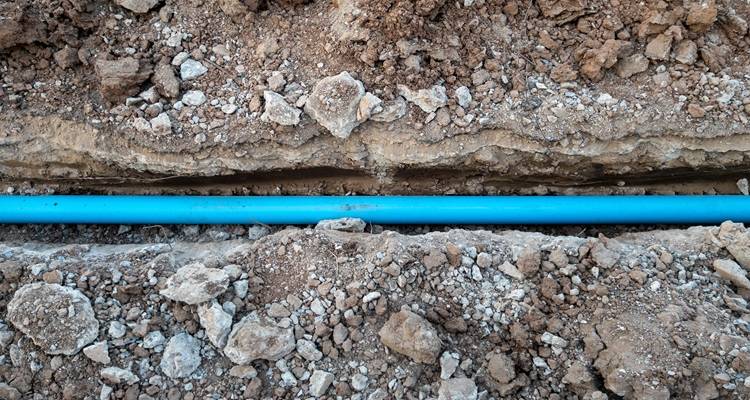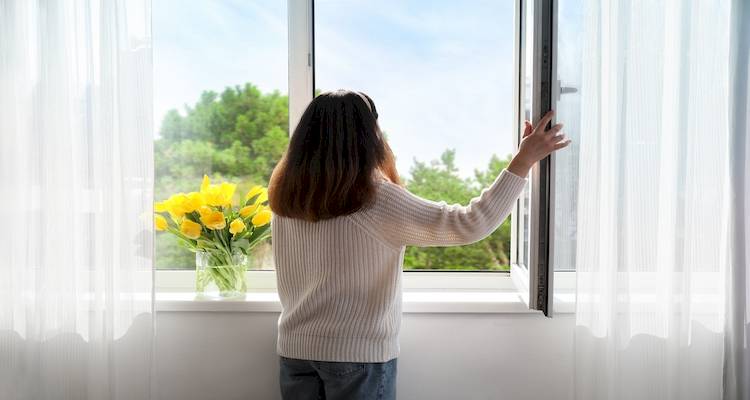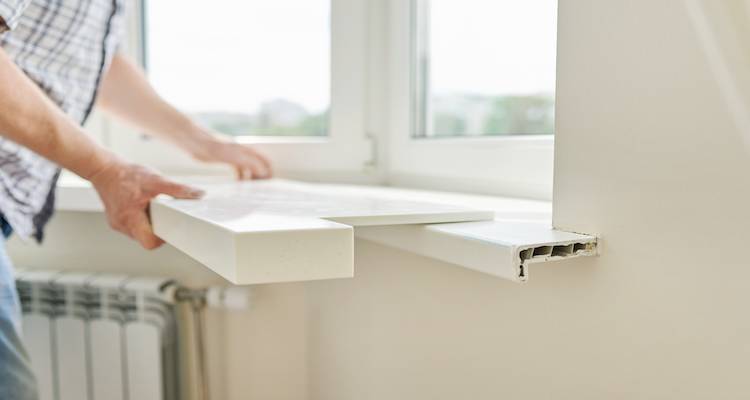Timber Frame Extension Cost
- The average cost for a timber extension is £36,000.
- It will take roughly 6 to 12 weeks to complete.
- A breakdown of pricing information for different types of timber extension.
- How long the job will take, and a general overview of what the job entails.
- Whether you need planning permission.
- How to find and hire tradespeople.
Want to discover the cost of building a timber frame extension?
This complete guide covers all you need to know about timber frame extension costs, including the cost of an oak frame extension, lean-to wooden extension prices and more!
We also have plenty of builders ready to give you a quote for building a timber frame extension.
Need more cost information? Check out the guide below...
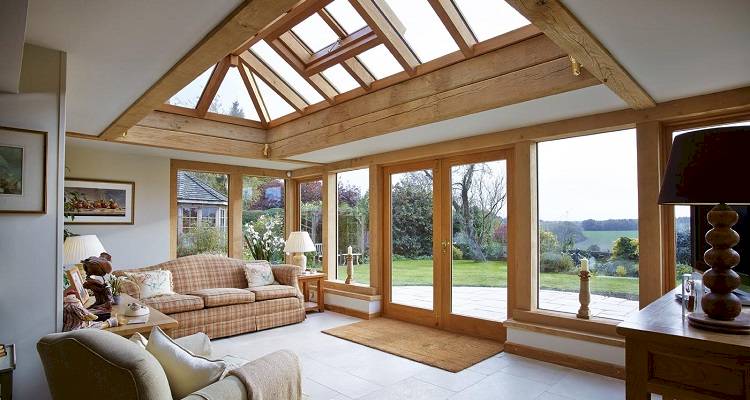
£36,000
Table of Contents
- How Much Does a Timber Frame Extension Cost?
- Timber Framed Extension Prices
- Labour Cost of a Timber Frame Extension
- Timescales for a Timber Frame Extension
- Factors That Impact Timber Frame Extension Costs
- What's Involved with Building a Timber Frame Extension?
- Who Can Plan my Timber Frame Extension?
- DIY Timber Frame Extension
- Timber-Framed Extensions Vs Brick Extensions
- Planning Permission and Building Regulations
- What Fire Protection Regulations Need to be Followed?
- Different Types of Timber Frame Extension
- Hiring a Timber Frame Extension Specialist Checklist
- FAQs
How Much Does a Timber Frame Extension Cost?
On average in the UK, the cost of planning and constructing a timber-framed extension ranges between £1,600 and £2,700 per square metre. However, it is essential to recognise that many factors will contribute to determining the overall cost.
These cost-affecting factors include the finish of your extension, the size and complexity of the extension and the quality of the materials used to construct your extension.
Many advantages make timber-framed extensions so popular amongst homeowners. The first being the overall construction time. Compared to using bricks, which is commonly the default method of building home extensions, timber frame extensions are often much quicker to construct. They're also usually cheaper than the cost of a single-story extension that's constructed from brick.
Are timber frame extensions cheaper? Often, yes. The frame goes up faster than masonry, so labour time is usually lower.
Timber frame extensions are also less likely to be affected by the weather, which means that you will be able to get your build to a weather-tight phase much quicker than alternative methods of construction.
This process saves you time and will likely be much cheaper than alternative building methods, as your contractor's hourly or daily labour rates will be reduced.
We're thinking of using a timber frame kit for our extension and leaving some of the wood exposed inside. However, I'm worried about fire safety as it'll house part of our kitchen. Are there any building regs etc to be aware of or things we should do to make it fire-safe?
Timber Framed Extension Prices
There are many cost-affecting factors to consider when calculating the overall price of building a timber frame extension, for example building a kitchen extension is potentially more expensive than a garage extension. As such, please note that the costs in this table are estimated and should only be used as a rough guide only.
| Extension Size | Timber Used | Price Per m² | Cost |
|---|---|---|---|
| 15m² Single Storey Extension | Pine Timber | £1,600 – £2,100 | £24,000 – £31,500 |
| 30m² Single Storey Extension | Pine Timber | £1,600 – £2,100 | £48,000 – £63,000 |
| 15m² Single Storey Extension | Maple Timber | £1,800 – £2,300 | £27,000 – £34,500 |
| 30m² Single Storey Extension | Maple Timber | £1,600 – £2,000 | £48,000 – £60,000 |
| 15m² Single Storey Extension | White Oak Timber | £2,000 – £2,500 | £30,000 – £37,500 |
| 30m² Single Storey Extension | White Oak Timber | £2,000 – £2,500 | £60,000 – £75,000 |
| 15m² Single Storey Extension | Red Oak Timber | £2,200 – £2,700 | £33,000 – £40,500 |
| 30m² Single Storey Extension | Red Oak Timber | £2,200 – £2,700 | £66,000 – £81,000 |
Labour Cost of a Timber Frame Extension
For most timber-frame extensions, labour comes in at about 35%–45% of the total cost. It’s usually a touch lower than masonry because the frame goes up more rapidly. The rest covers materials, plant, professional fees, the builder’s overhead and profit, VAT, and a small contingency. Although there are a number of other factors involved in labour fees when it comes to building a house extension.
Who hires the trades? On most jobs a main contractor/general builder or timber-frame company takes the lead. They bring in and coordinate the electrician, plumber, roofer, plasterer and decorator. You can hire people one by one for small jobs. But then you’re the project manager — sequencing, quality, health and safety, and Building Control sign-off are on you.
Below are the typical day rates you’ll see on site. We’ve matched these to our main house-extension and single-storey extension guides.
| Type of Labourer | Avg. Cost Per Day |
|---|---|
| Builder | £160 – £340 |
| Plumber | £150 – £280 |
| Joiner | £140 – £210 |
| Electrician | £150 – £400 |
| Plasterer | £120 – £200 |
| Roofer | £160 – £280 |
| Painter and Decorator | £120 – £230 |
Timescales for a Timber Frame Extension
Programme lengths vary with design complexity, access, weather, lead times and inspections. As a guide:
| Extension Size | Typical Duration | Notes |
|---|---|---|
| Small (≈15m²) | 6–8 weeks | Quicker shell phase with timber frame; allow for services/finishes. |
| Medium (≈30m²) | 10–12 weeks | Longer if adding kitchens/ bathrooms or complex glazing. |
| Large (≈60m²) | 12–14+ weeks | Staged trades and inspections extend the programme. |
Lead times: reputable builders are often booked several months in advance. Expect 2–4 months in quieter periods and up to 6–9 months for popular contractors or peak seasons. Secure dates early once drawings and approvals are in hand.
Factors That Impact Timber Frame Extension Costs
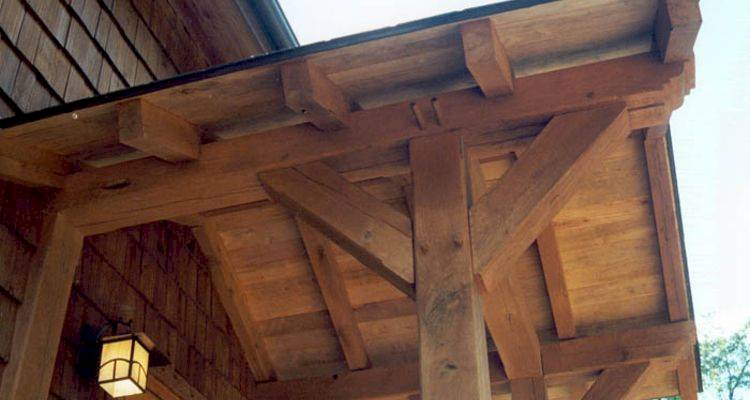
When planning your new timber frame extension, you should consider the desired look and finish you wish to have. Some of the most common are red oak, white oak, cedar and pine. The species of wood that you use will determine the overall quality and cost of your timber frame extension.
It's best to talk through options with a specialist who is experienced when it comes to building extensions. Lower-cost timbers may be less durable or dimensionally stable if untreated or if an unsuitable grade is specified. Structural timbers must meet the required strength class and be detailed for durability.
Another cost-affecting factor that you will need to consider when planning your new extension is what type of exterior finish you would like. Some of the most common exterior finishes used with timber-framed extensions include rendered boards, red brickwork, brick slips, metal cladding and timber cladding.
Each of these materials will vary in price, adding to the overall cost of your project. They will also determine the final aesthetic result and quality of your extension.
What's Involved with Building a Timber Frame Extension?
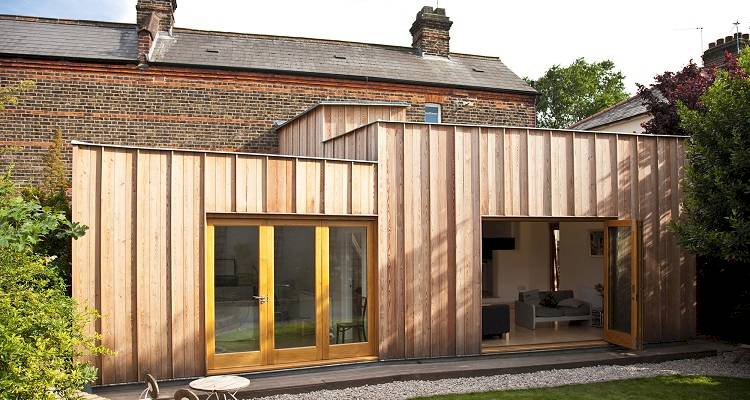
Here are the steps you'll need to take during your timber frame extension project:
Find Reputable Contractors
Start by comparing contractors in your local area and reviewing their previous work. Once you've chosen your trader, your building specialist will visit you to assess the scale and complexity of your project.
You will also need to source a qualified architect or designer to sketch up the first plans to get an idea of how your finished extension will look.
Choose Your Materials
You should discuss with the building firm that you have chosen the different options that are available to you when creating your new timber frame extension. Ask about each material's advantages and disadvantages and how this would affect your final project cost.
Decide Extension Size
Think about how many storeys your extension will cover. Remember that this is also going to increase your final project cost significantly. You and your contractor should talk about the exterior finish you are aiming to achieve and what material would be most suitable for your project.
External Building
Once you have all of the plans and regulations in place, the physical construction work can commence. Your team of specialist contractors will begin working on the ground of your property and laying foundations on which your extension will sit.
Generally, the foundations (or “footings”) are concrete and sized to suit the ground conditions and loads. Depending on the contractor you decide to hire, the timber frame can be constructed on site or fabricated off site and assembled at your property.
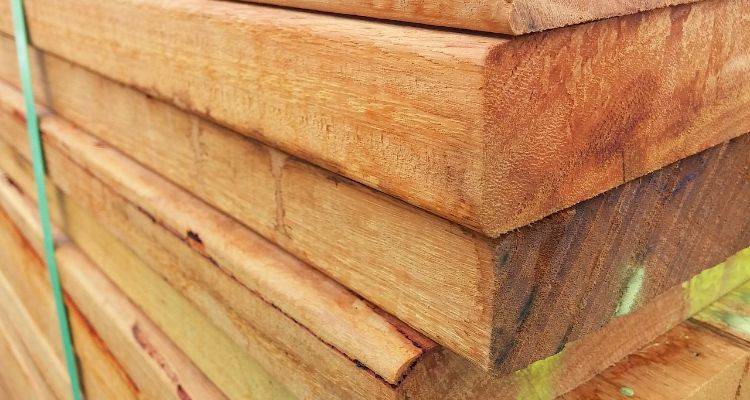
The structural frame is typically softwood studs (e.g., C16/C24) or engineered timber panels (e.g., structural insulated panels), which speeds up construction.
Your timber frame will be assembled by the skilled professionals you have hired, along with any insulating timber boards or panels. The main advantage of using timber to construct any building work is the efficiency and speed of the construction phase. It is much easier for your builders to progress your build to a water-tight, weatherproof state as opposed to using alternative building methods.
Internal Finishing
Once the framework of your extension is securely in place and water-tight, work can commence on the interior and exterior proportions of your build. This is where any windows, doors, cavities and exterior finishes can be installed along with roofing and roof guttering systems.
If you have agreed to, then your building firm will begin working on the interior of your extension, such as the electrical wiring, plastering and decorating.
Who Can Plan my Timber Frame Extension?
It is important to recognise that in the UK, there is currently no law stating that you must have an architect to submit plans for your new extension. However, we always recommend the best possible way for you to make the process run as smoothly as possible and achieve the best quality results.
We will always suggest that whenever you are planning on carrying out extensive building work on your property, you seek the advice and services of skilled professionals who are experienced in this area.
Hiring a qualified architect is by far the best way to achieve a detailed plan and diagram of how you envision your new extension to be. An architect will cover all elements of your build and will be able to advise you on the best possible recommendations and solutions that will benefit your case.
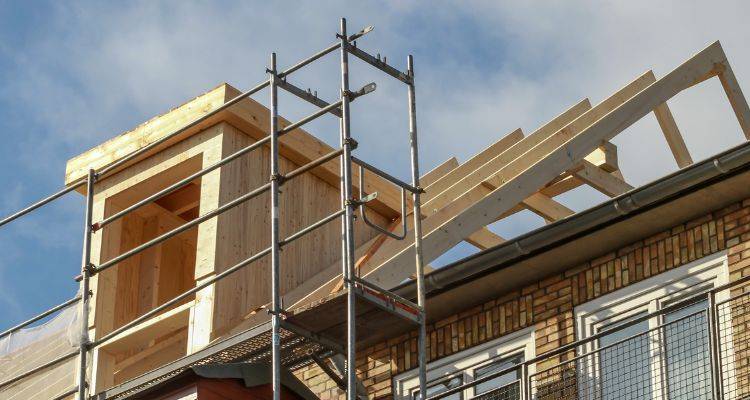
Many architects will often charge a percentage of the final cost of your extension. Usually, this percentage is between 8% to 15%. Consider that if your total project cost is £50,000, your architect may charge up to £7,500 for their design service.
Alternatively, there are trading companies that offer similar services for homeowners who are planning a property extension but might not know where to start. These companies provide simple design services, either by CAD (computer-aided design) drawings or 3D models, specialised in the construction of home extensions.
Often, design firms will offer a variety of packages, from partial plan designs to full planning of your extension. Depending on the level of service you require, you may end up paying between £100 and £150 per hour for a CAD designer.
I'm building a timber frame extension and need to confirm the width and depth of the footing. A lot of people are saying 450 wide and 1 metre deep. Is this excessive for a timber build?
DIY Timber Frame Extension
Building a timber frame extension is an extensive renovation project that is best left to the professionals.
However, there are certain aspects of the project that you can do yourself to help move things along if you feel competent. One advantage of working with timber is that it is much easier and lighter to assemble compared to other methods of building.
You may find that you can construct the timber framework yourself, either on-site or off-site, and progress to a stable, water-tight build phase. This will save you both time and money as you will only require the assistance and service of a construction firm for part of the build.
However, if the structural work of your extension is not correctly assembled and stable, your property will be at risk. To ensure that you receive the best quality finish, you should always consider speaking to an experienced professional before attempting to carry out the work yourself.
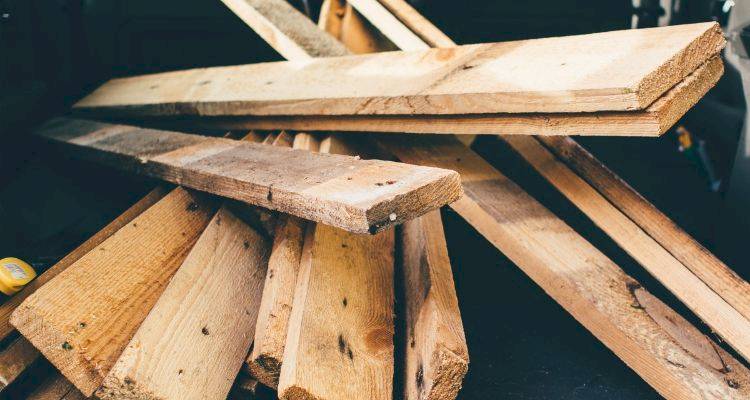
Building any kind of home extension is a huge task, requiring professional skill and materials. Not only that, but the use of power tools can be exceptionally hazardous if used by someone inexperienced or unskilled.
Some of the most common disasters associated with self-builds are issues with the finish, quality and functionality of the final result. Confident DIY-ers will believe that they do not necessarily need to pay for a professional tradesperson's service, attempting to carry out the work themselves.
More often than not, they will face issues when trying to follow the architect's designs and plans. Following construction plans and working alongside qualified designers requires a lot of patience, experience and skill, which the average DIY-er often struggles with. The result is a project that lacks a quality finish and potentially breaches building regulations.
Timber-Framed Extensions Vs Brick Extensions
Let's take a look at the pros and cons of choosing a timber framed extension versus a brick extension.
Timber-Framed Extensions

Using the timber frame method to build your new home extension will significantly reduce the labour charges of your traders because the process is much quicker to complete.
If modern timber frame construction is designed in the right way, is detailed, and looked after properly, it can last for years and won't rot. As with any organic material, though, you’ll need to protect it from moisture and maintain it thoroughly to ensure it lasts.
Speaking of which, you can have a timber extension instead of brick. The structure can be timber while the external finish matches your home (e.g., brick slips or render) if you want a traditional look.
Pros
- ✔ Faster and more efficient to construct compared to brick extensions
- ✔ Lower labour costs compared to brick extensions, as the build time is shorter
Cons
- ✖ Timber requires good moisture management and maintenance to achieve long service life
- ✖ As timber is a natural material, it can be susceptible to rot, moisture damage, and invasive pests if not maintained
Brick Extensions
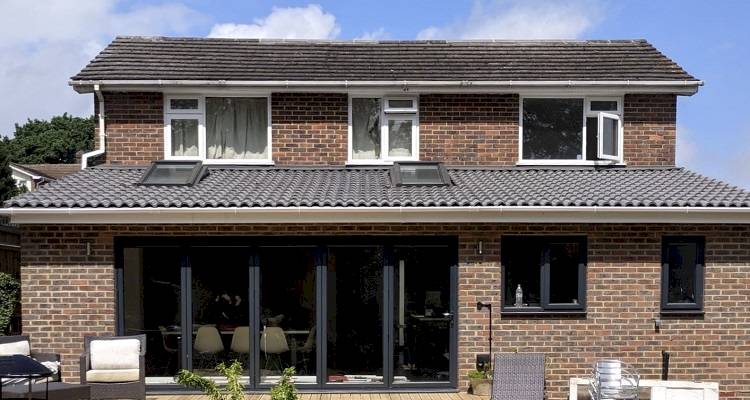
Unlike timber builds, brick and blockwork extensions generally take longer to get to a water-tight phase, as weather will often interfere with the construction.
The weather conditions need to be right when working with bricks and blockwork, or the cement will not set correctly, resulting in a weak and unstable finish.
Many construction companies and local tradespeople will charge an hourly or daily rate for their services. The longer your project takes to construct, the higher these fees are going to be.
Pros
- ✔ Superior durability compared to timber extensions, lasting for 150+ years
- ✔ Low-maintenance once built
- ✔ More traditional appearance, blending seamlessly with UK houses
Cons
- ✖ Dependent on weather conditions to build, which can make build times much longer and more costly compared to timber constructions
- ✖ Labour costs are higher
I'm looking to build a single-storey extension (timber frame with a flat roof). Can anyone advise what depth footing I will need? The dimensions are 4mx5m, but I'm just costing it all up at the moment.
Planning Permission and Building Regulations
If your timber frame extension design meets permitted development limits, then a full application for planning permission isn’t required. For example, a single-storey side extension up to 4 m high and no wider than half the original house, can be classed as a permitted development.
There are also other restrictions that apply, especially if you live in a listed building or conservation area, so it's always best to check with your local planning authority before starting any work. Building any construction without required permission is a breach of planning control and may lead to legal action, or you could be instructed to dismantle your timber frame extension altogether.
In the UK, the typical cost of a planning application is currently £528 - although this may vary depending depending on the type of extension and the amount of work it involves. You may also need to request a party wall notice, especially if you build on or near a boundary or a neighbouring property.
After your initial plans are prepared, you’ll need Building Regulations approval (via your local authority building control or an approved inspector). This checks structural safety, energy efficiency, ventilation, drainage and much more. In some cases, your contractor may be able to self-certify or apply for building regulation approval on your behalf.
What Fire Protection Regulations Need to be Followed?
Fire safety for extensions is governed by the Building Regulations (Approved Document B). When construction is underway, certain site fire precautions also apply.
Designers and contractors must make sure the completed build meets the required fire resistance (for example, suitable linings, protected structure, compartmentation and means of escape). They’ll also need to make sure that the right alarms are fitted.
Normally, this entails tested fire-resisting linings as part of the wall/ceiling build-ups, As well as this, the right detailing must appear around openings and services, not forgetting the protection of structural elements (where necessary).
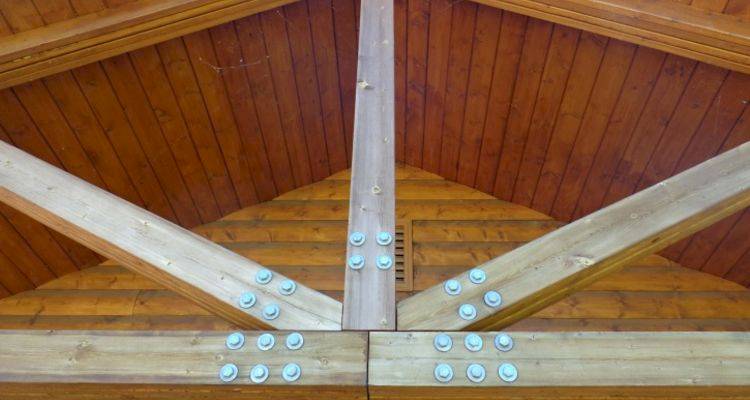
Usually, you'll need cavity barriers at agreed locations within external and internal cavities. For instance, this could be around openings and at compartment lines to close concealed spaces and restrict the spread of smoke and flame.
Most timber frame walls and floors will require a combination of fire-resistant lining boards along with other protective elements, being fixed to the internal structural framework of the building.
Consider that other appropriate components may also require protection, such as insulation materials, air gaps and electrical connections. Your qualified construction team will be able to inform you of the methods that will be used during your build. However, the best way to educate yourself on the requirements of the fire protection legislation is to contact your local authorities.
What should I look for when choosing a company to build a timber house frame?
Different Types of Timber Frame Extension
There are a few different types of timber frame methods to consider when planning your new extension.
The Platform Frame Method
The platform frame method of building timber frame structures benefits both low-rise and medium-rise buildings.
Many buildings up to 7 storeys in height have been erected, typically for residential and commercial uses, using the platform frame method.
This method of construction involves floor structures bearing onto load-bearing wall panels, thereby creating a platform for the development of the next level.
Pros
- ✔ Effective for multi-storey construction in both low- and medium-rise buildings
- ✔ Uses short timber lengths which are easier to source, giving a stable floor level for contractors to work from
Cons
- ✖ Horizontal load-bearing timbers may shrink, which in turn causes interior stress on finishes like plaster, leading to cracking
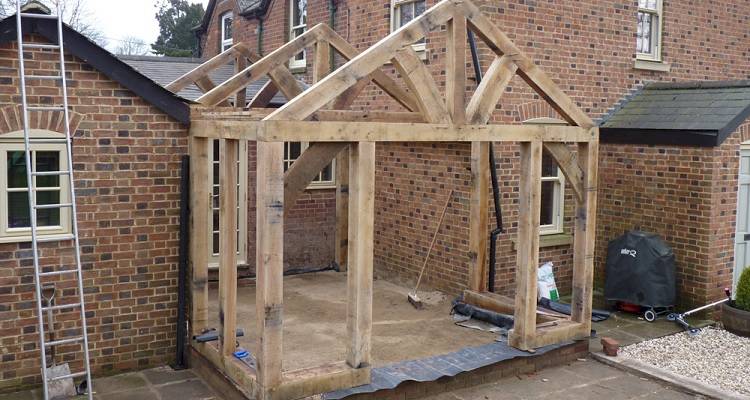
Vertical Panel Frame
Vertical panel frame methods are the most commonly used process for constructing smaller timber frame structures such as home extensions and garden outbuildings.
The process involves the erection of vertical timbers to create the supporting structure of the build. These timbers will form the panels of the internal support, fixing together to create the sub-structure.
Pros
- ✔ Straightforward panel assembly, reducing the need for skilled labourers
- ✔ Fast construction times, lowering overall labour costs
Cons
- ✖ Not suitable for large-scale projects or builds above single-storey structures
Volumetric
Volumetric modular units are construction elements that can be combined to form a whole building without the need for an additional supporting sub-structure.
Often, these components are manufactured off-site, either in a factory or workshop, and transferred to the construction site for installation.
Pros
- ✔ Factory-built quality, improving precision in the construction
- ✔ Fast on-site building as modules are already connected off-site
Cons
- ✖ Hard to transport large structures to site with high shipping fees, especially to more remote locations
Hiring a Timber Frame Extension Specialist Checklist
When the time comes to hire a specialist to construct your timber frame extension, here are some points you should keep in mind to make sure you get the best professional for the job:
- Do you have a professional architect or designer involved? Research local architects or designers to help develop the initial plans for your timber frame extension, check what qualifications and experience they have and also consider hiring a project manager to oversee the progress.
- Have you gathered multiple quotes before deciding? Search for reputable, qualified tradesmen to work on your project and gather at least 3 quotes to ensure you are receiving the best price to ensure you're getting a fair and competitive price.
- Have they provided an itemised breakdown of costs? Request a full breakdown of costs, confirm all fees are clearly explained, checking waste removal, skip hire, and scaffolding are all included so there are no hidden fees.
- Are planning permissions and building regulations being followed? Ask whether they understand local planning requirements and can ensure that your extension complies with all relevant building and fire regulations.
- Have you discussed materials and timeframe? Discuss your options for both internal and external materials, along with methods of construction and how long the project is expected to take. Ensure if there are any unexpected delays or expenses you will remain within budget.
- Do they have public liability insurance? While not legally required, most reputable companies and tradespeople will have insurance that protects you if anything goes wrong during the build, such as accidental damage or personal injury.
- Do they have examples of similar work? Check their MyJobQuote profile for photos of recent timber frame extensions and read feedback or reviews from previous customers to assess their workmanship and reliability.



